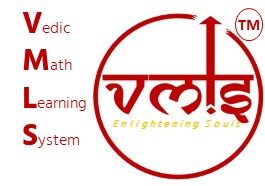Five MUST-KNOW facts about ‘ Vedas’ !
India is known for its intelligence and Indians have been very much scientific in their approach to live life. Well, definitely we have very strong legacy of the Science and logic right from the Vedic era. It is very much important to know few facts about our ‘Vedic Scriptures’ as they have been the base of our culture. It is the matter of our pride that such miraculous ideas, wisdom and eventually principles were generated from India.
Here are the five facts that one must know about Indian ‘Vedas’ :
#1. Vedas are not man-made!
The word Veda is derived from the Sanskrit word ‘Vid’ which means ‘Knowledge’. Vedas are the invincible ancient Indian literature. They are the oldest-ever texts to make implicit and explicit use of mathematics. Vedas are the earliest Indian scriptures. We have four Vedas which when put-together is called ‘Ved-Samhita’. ‘Veda’ means the subject of knowledge or the means of acquiring knowledge. Vedas were knowledge given by the Gods themselves to the Hindu sages by oral Tradition. The knowledge of Vedas originated from the great Lord Brahma to Saptarshi (Sapt -Rishi); Kashyapa, Atri, Vasistha, Vishvamitra, Gautama Maharishi, Jamadagni and Bharadwaja. These saptarshi were actually seven mind born sons of Lord Brahma. From these rishis to many sages and then the others, the great Vedic knowledge kept flowing. The knowledge was flowing by an ‘Oral Tradition’ from one generation to the other. There was no documentation of this knowledge till 1500 BCE.
#2. Documentation of Vedas!
Maharshi Vyasa Krishna Dwaipayana – the legendary author of the great Indian epic of Mahabharata, is the author of Vedas and Puranas as well. He was also known as ‘Ved-Vyasa’ as he actually classified the Vedas. He holds a lot of respect in India so as Indians cherish his birth and his work to document the sacred text on the day of ‘Guru-Purnima’! To add more to the fact, it is important to know that, Shri Vedvyasa started documenting the Vedic Knowledge flowing through oral tradition, which was followed my numerous sages after that. So, learned people, kept recording the same for the future generations. So, Vedas are not authored by just one person, but it is certainly a collective effort. The very first documentation was done by Maharshi Vyasa Krishna Dwaipayana during 1500 BCE. Many sages kept documenting it later. There is no one particular author of Vedas!
#3. Classification of Vedas:
We have four Vedas which when put-together is called ‘Ved-Samhita’. ‘Samhita’ (Sanskrit: संहिता) literally means ‘put together’. ‘Ved Samhita’ consists of four Vedas, namely, Rig-Veda, Sama-Veda, Yajur-Veda and Atharva-Veda. As Vedas are classifies in four volumes and hence known as ‘Chaturveda’. Vedas were formed to codify the ideas and practices of Vedic religion and to lay down the basis of classical Hinduism. Each Veda is associated with a particular aspect of ritual. Rig-Veda deals with Wisdom of the Verses, whereas, Sama-Veda represents Wisdom of the Chants and, Yajur-Veda is associated with Wisdom of the Sacrificial Formulas. All these three vedas are connected and talk about the same concept. Atharva-Veda focuses on a little different genre and enlightens Wisdom of the Atharvan Priests. The Veda Samhita is the collection of hymns offered to various deities. These hymns basically reflect all forms of knowledge.
#4. Structure of Vedas:
Each Veda consists of four respective parts – the Samhitas, the Brahmanas, the Aranyakas and the Upanishads. The Samhitas are basically collection on hymns or Shlokas. Brahmanas deal with Rituals, procedures or religious duties. The Aranyakas serves to the objects of meditation ans are associated with theologies representing mysticism and symbolism. The Upanishads form the concluding portions of the Veda and therefore called the ‘Ved’ – ‘Anta’ i.e. ‘Vedanta’. Upnishads are the most refined form of Vedas and discusses the Vedic philosophies, which contains the essence of Vedic teachings.
#5. Vedas are scientific!
A lot many people confuse the ‘Vedas’ with being just a religious text. They perceive them to be the symbol of Hinduism specifically! The formation or documentation of Vedic scripture was having the roots in Hinduism. But, Vedic scriptures are not having any aim to propagate just a religion but it propagates an idea of leading a better life. Vedic scriptures show the mankind a path to lead a better life! For an example, the entire world is forced to do ‘Namaste’ instead of a handshake during Covid-19 pandemic and the entire world recognized the power of Indian ritual. This was a simple way of greeting by ‘Namaste’ to everyone in Vedic ritual. This way we preserve our energy with us and stop disseminating our energy anywhere else. When we do ‘Namaste’, we establish a spiritual connection with a person by paying a lot of respect to the being, which ultimately create a positive energy into the environment. Today, the entire world is following the footsteps of India very convincingly.
